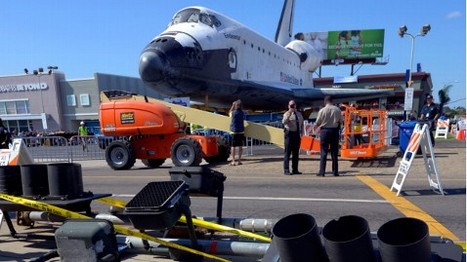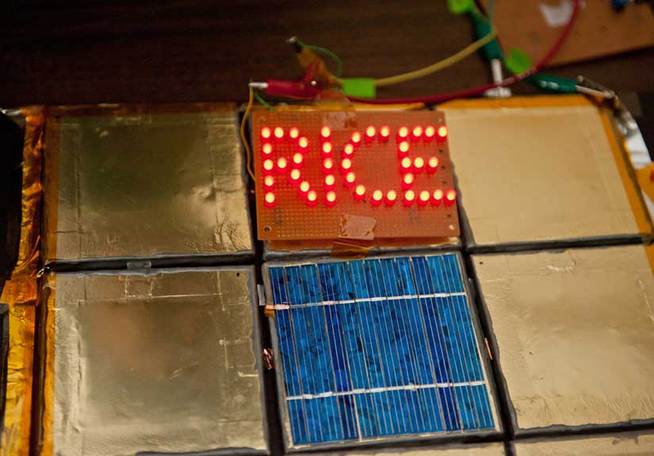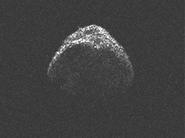
The space shuttle Endeavor is being slowly maneuvered through the streets of LA. This is causing quite the ruckus needless to say for the inhabitants of the City of Angels. Lets just hope that it makes it without being spray painted by some random latino thug. I wonder what those rims would bring down in Mexico? (I kid I kid!)
On a much more positive note, at least the residents of LA have something worth while to look at for a bit. Sure beats the pants off of Paris Hilton. (Wait! Put those back on! No one wants to see that! I haven't even had my coffee! aiyeeee!!!)

Spray-on lithium batteries. This substance is rechargeable and ready to be applied anytime and anywhere.
"We can convert almost any object to a battery," Neelam Singh, a materials scientist at Rice University in Houston, told InnovationNewsDaily. "Spray painting is already an industrial process, so it would be very easy to incorporate this into industry,"

Over the last century, Science as a whole has had many "ups" and "downs". We have gone further and further into the reaches of space with our
deep peering telescopes. We dive more deeply down than ever before into the realm of the
quantum. All in search of the
answer to everything.
So here we are today, we know so much about our world around us, yet we know so little. We have the ability to compute at massively fast speeds, and using that we have even modeled the Universe (Or rather, what we think it looks like for now). We have observed protons colliding with anti-protons. We can even measure how much energy is released, and you can watch it on your phone! Now even NASA is getting on board and allowing scientific data to be made readily available to the amateur scientist from anywhere in the world. But what does this openness with information mean for the future of science?
I recently came across a
YouTube video based on a new idea surrounding the formation of the Earth and how Continents move over time. The theory is so overwhelmingly the more simple and correct solution for continental drift in my humble opinion, and certainly warrants much more study. However, this theory continues to struggle in the face of tectonic shifting. This is because mainstream science has always scoffed and criticized almost any and all theory that questions how we think about any science. Just look at what happened to Galileo.
So after all of these years and all of these mistakes made by mainstream scientists, and after so many instances of globally impacting discoveries being accredited to "fringe" amateur scientists, you would think that the scientific community would give a little more consideration to the theories being generated by the public. These scientists are after all making their data available to an increasingly intelligent online population and readership.
So where does science go from here? What does the next one hundred years take us?
Carl Sagan predicted that we would reach the singularity by 2028.
TIME Magazine puts it around 2045. Many do not believe in the singularity, and predict we will have conquered our solar system and well on our way to colonizing exo-planets by then.

One thing is for certain. There are new and exciting scientific discoveries every day. Some of them have such great implications and such overwhelming evidence that there is no scientists worth his lab coat in the world that would deny the obvious. Discoveries such as these are not every day or every week. Perhaps they are just once in a lifetime discoveries that must be "rediscovered" decades or centuries later by "mainstream" scientists.
Don't misunderstand what I imply here, I certainly appreciate and support mainstream efforts. I just wish that there would be a more receptive relationship between the amateur and professional communities.
Finally, I would like to leave you with a short video demonstrating such a discovery. Here we see the technology that will eventually lead to the end of such things as tires, asphalt, and all ground transportation as we know it, as well as it could lead to things such as hover boards. That's right, remember those things that we seen as kids on
Back to the Future?Well check out this video. I will embed it so you can watch it here if you like. Feel free to tell us here what YOU think will happen in the next century of science!










 RSS Feed
RSS Feed